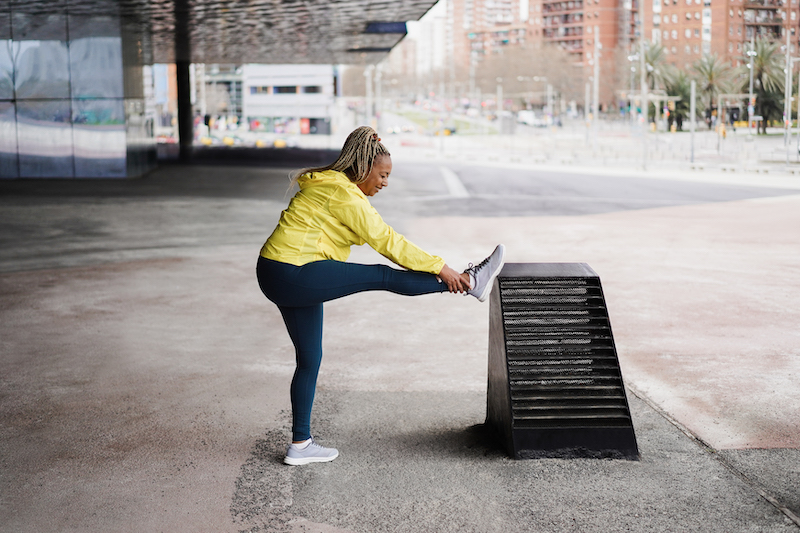A sprained ankle is one of the most common injuries that occurs to the soft tissue or ligaments of the ankle. It’s estimated that approximately 100,000 Canadians sustain an ankle sprain each year. Heavy manual labor, contact sports, and long Alberta winters full of slippery sidewalks and roads all increase the likelihood of spraining an ankle. Sprains are graded on a scale of 1-3, depending on the severity.
The symptoms of an ankle sprain can be mild, with very little swelling or pain, to significant bruising, swelling, pain and inability to weight bear on the ankle. For most ankle sprains, a recovery time line is somewhere between 4 to 12 weeks. If you think you have sustained an ankle sprain, and are anxious or unsure about the severity or how to best treat it, your physical therapist can assess and give you advice about management. Physical therapy is one of the first line treatments for ankle sprains and can help minimize the amount of time you experience pain or have to take time off of sports or work.
Anatomy of an ankle sprain: how do they happen?
The most common ankle sprain is known as in inversion sprain, or when someone rolls onto the outside of the ankle. This causes injury to the ligaments on the outside of the ankle and can result in instability of the ankle. Other common ankle injuries are eversion ankle sprains, often caused by a contact injury from the side. This causes the ankle to roll inward and result in injury to the ligaments on the inside of the ankle.

The last ankle injury we’ll look at is known as a high ankle sprain, which are significantly less common, but often result from a mechanism that involves the ankle being in a position of dorsiflexion and external rotation of the tibia. A high ankle sprain results in separation of the syndesmosis or fascia between the tibia and fibula of the lower leg. This causes instability of the ankle joint as it causes the tibia and fibula to splay apart when the foot and ankle are loaded (ouch!).
Each of these sprains, plus the severity of a sprain, will determine what your physical therapist recommends for treatment and rehab. If you suspect you have a severe sprain it is important to contact your doctor or physical therapist as soon as possible to rule out an ankle fracture, and determine if you would benefit from the use of crutches or air cast to stabilize the ankle and assist with healing of the ligaments.
First steps when you think you may have a sprained ankle

Following an ankle sprain, it is not uncommon to have pain, stiffness, difficulty weight bearing on your injured ankle, and varying degrees of swelling, tenderness and bruising. In the acute period (the initial 72 hours following a sprain), it is recommended to rest and manage symptoms with elevation, gentle pain free ROM, and some people find placing a tensor bandage around the foot and ankle to manage swelling is helpful for pain. Ice may be helpful for symptoms management in the first 24-48 hours, but the literature does not support the use of ice after this point.
Care should be taken with non-steroidal anti-inflammatory drugs (NSAID’s) following an ankle sprain. They may be used to reduce pain and swelling, but usage is not without complication as NSAID’s interrupt and suppress the natural healing or inflammatory process.
Following up with your physical therapist for reassessment 5-7 days after injury improves the ability of your therapist to correctly diagnose the severity and grading of your sprain and develop a personalized rehabilitation plan with you at that time depending on your goals.
Rehabilitation for a sprained ankle
While a lot of people are tempted to ignore their injury and wait for time to heal their injury without engaging in a rehabilitation protocol, it is discouraged as it increases your likelihood of complications such as chronic ankle pain, recurrent injury and ankle instability. It is ideal to discuss your recovery with a trusted physical therapist at REP Physio and begin a tailored program of rehabilitation exercises specific to your injury and return to activity goals.
Range of motion exercises
You should begin gentle pain free range of motion or ROM exercises as early as tolerated after injury. Maintaining ROM is important for progressing to strengthening exercises as your injury heals. Your physical therapist can teach you how to complete these and how often to do so. ROM exercises should include all directions of the ankle, including dorsiflexion (toes towards your nose), plantarflexion (gas pedalling), inversion (toes in) and eversion (toes out).
Strengthening exercises
In regard to treatment, the literature is supportive of supervised exercise based programs over passive modalities as it stimulated the recovery of joint stability. Your physiotherapist will design your exercise program to address any strength deficits they find on assessment. This may include rudimentary resistance band exercises in the early stages and progress to more dynamic strength training, including single leg exercises and agility drills. The sets and repetitions prescribed will be based on your current capacity and symptom provocation. Strengthening the surrounding musculature is prescribed with the goal of preventing further injury in the future, and restoring function as best as possible.
Balance exercises
Another type of exercise you will be likely to see in rehab are balance exercises. These often start with static balance, which helps to train the neuromuscular response of intrinsic foot and ankle musculature; and progress to dynamic balance. Balance exercises are also shown to improve proprioception and may be protective against future reinjury preventing chronic ankle instability.
Splints & braces
If you sustain a significant ankle sprain or you have recurrent ankle injuries, your physiotherapist may recommend an ankle brace for high risk activities such as returning to contact sports to prevent reinjury. Orthopaedic guidelines are in favour of semirigid supports over tensor bandaging or elastic bandaging in treatment, and your physiotherapist can help guide you in finding a brace that fits your needs.
Taping
Athletic taping may be appropriate during treatment if there has been an acute ligament rupture, or there is a need for early return to sport. Taping can provide short term support, although your physical therapist may recommend a brace depending on your specific set of circumstances.
Ankle sprain prevention

While ankle sprains are common, they do not need to have long term impacts. It is important to follow your rehabilitation exercise program to ensure you recover good muscle strength, flexibility and balance, prior to returning to activity and sport. Failure to treat a sprained ankle adequately, or returning to activity too early puts you at risk of re-injury and developing chronic ankle pain or chronic ankle instability. If you have experienced multiple ankle injuries already, you may benefit from a supportive brace for high risk activities or contact sports. Additionally, it is beneficial to warm up before engaging in exercise and to wear appropriate and well-fitting footwear.
Exercises to help avoid future sprains
After assessment, your physical therapist will determine which exercises will benefit you the most, adjusting based on your symptoms. Here are four exercises your physical therapist at REP Physio may incorporate into your programming:
The 4-way ankle exercise
Depending on your symptoms, your physical therapist may prescribe this exercise using isometric contraction or resistance bands to strengthen the muscles into four directions: dorsiflexion, plantarflexion, eversion and inversion.
Ankle ABC’s
This is a non-weightbearing active range of motion exercise in which the client moves their ankle in multidirectional planes by drawing the alphabet with the foot. This can be completed lying down or seated.
Calf stretch
If you’re one of the many people who end up in an air cast following an ankle sprain, you will likely find that restoring your range of motion into dorsiflexion and plantarflexion often needs a bit of extra effort. It is likely your physical therapist will add calf stretching to your program for this purpose. This includes stretching of two different muscles, the gastrocnemius and the soleus. One is performed with a straight knee (as the gastrocnemius is a two joint muscle crossing the knee and the ankle joint, whereas the soleus stretch is performed with the knee bent as it only crosses the ankle.
Heel raises
This is a strengthening exercise targeted at the posterior or back of the leg. This again involves the gastrocnemius and soleus muscles, as they are an integral part of our ability to walk, jump, run and sprint. Heel raises can be done on both feet, as a single leg exercise, and can utilize different ranges of motion depending on the surface they are completed on.
Before beginning any of these exercises, it is important to consult your physical therapist as they are often prescribed at different time points in the rehabilitation journey. Returning to exercises beyond your current capacity can place you at higher risk of reinjury and overuse injury.
If you have sustained an ankle injury that is not improving, or have chronic ankle instability, please reach out to schedule an appointment with one of our physical therapists. Please note: this article does not replace a thorough assessment and is meant to serve only as a general guideline surrounding ankle sprain. If you have questions or concerns, please consult one of our clinics by calling 780-395-9170.
References:
- Clinical practice guidelines 2018 https://pubmed.ncbi.nlm.nih.gov/29514819/
